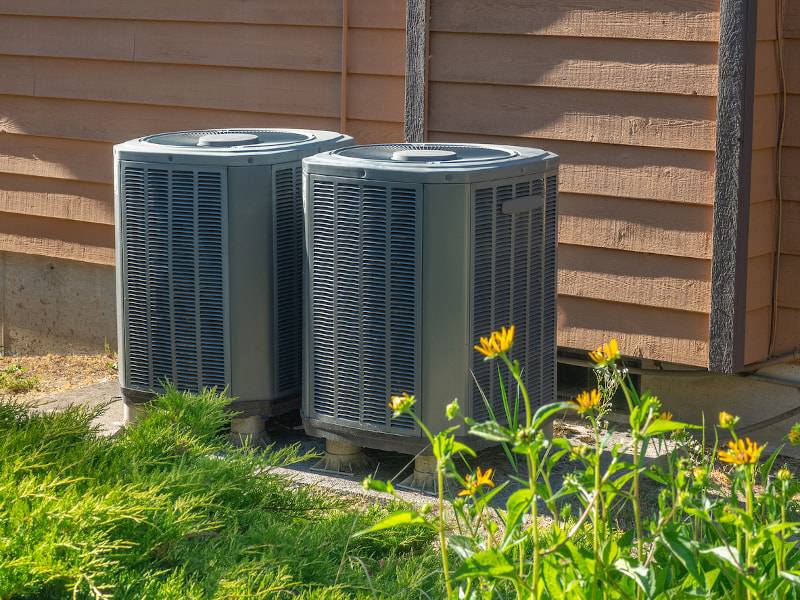The Cheverly, MD city government recommends planting ecologically sound perennials and trees to create biodiversity in neighborhoods around the city. That diversity should be a consideration as you plan to landscape effectively and safely around your air conditioner. Plants and trees near your condenser unit could cause problems, though, so here’s some info about how landscaping impacts your HVAC system.
Plant Detritus Could Foul the Outdoor Fan
Ash and elm trees produce “helicopter seeds,” which can flutter down into the air conditioner fan assembly and clog the air intake. The same holds true with maple trees. To avoid this issue, it’s a good idea to install a hedge or a fence between the trees and the unit to protect it.
You can also clear away any seeds you see before they can get into the fan. If you plan on removing anything from inside the condenser, be sure to shut off power to it first.
Uneven Ground Could Cause Your HVAC Slab to Shift
The general rule when it comes to grading next to your foundation is to slant the grade away from your home to prevent water from seeping into your basement. The downward slant away from your foundation could cause your HVAC system’s outdoor unit to shift, though, which could damage it. Taking care to make the small piece of ground where the unit sits on its slab level is easy enough, and that one small detail of level ground can prevent water seepage into your basement.
Planting Beneficial Shrubs in the Right Places
Not everything about landscaping around your system’s outdoor unit is detrimental, however, and some things can actually help with your unit’s efficiency. One such example would be to plant leafy shrubs. Camellia and elderberry are two examples that will grow high enough to put your outdoor unit into shade while thriving in the climate of our area.
Alternatively, you could transplant an eastern redbud tree to create shade for your outdoor unit. The flowers are a pretty pink, and the tree grows to about 20 or 30 feet tall. (Keep in mind that you’d still have to keep the tree’s flowers out of the unit when they fall off in late autumn.)
Erecting Fences Is Better for Small Spaces
If there isn’t room in your yard for large shrubs or small trees, or if you have a neighbor’s home quite close to your property line, a fence is a good substitute. The shadows it casts on your outdoor unit will do the cooling job just as well as those from the shrubs and trees. Be sure to leave enough room for our technicians to service your unit if necessary.
Surrounding the Unit With Mulch
If the space around your outdoor unit is bare, then it’s a good idea to put down landscape fabric out to a distance of three feet from the edge of the unit’s slab and then cover it with mulch. Alternatively, you can use painted stones. The idea behind both of these is to keep dirt/mud from splashing into the outdoor unit when it rains.
Yard Work Tools Could Deposit Waste Into the Unit
While performing yard work, such as mowing or string trimming, the cut plant material could fly into the unit, or the wind could blow it there. Simple care and attention while using any yard tools will keep the plant waste from clogging parts of your HVAC system’s outdoor unit.
We’ve been in business for over a century, so our experience speaks for itself. We hold an A+ rating from the Better Business Bureau and have had full accreditation since 2004. And, even if you do everything right with your landscaping around the outdoor unit of your HVAC system, something could still go wrong with it, which means that you should call Griffith Energy Services, Inc. to set up an appointment for repairs.
Image provided by iStock




